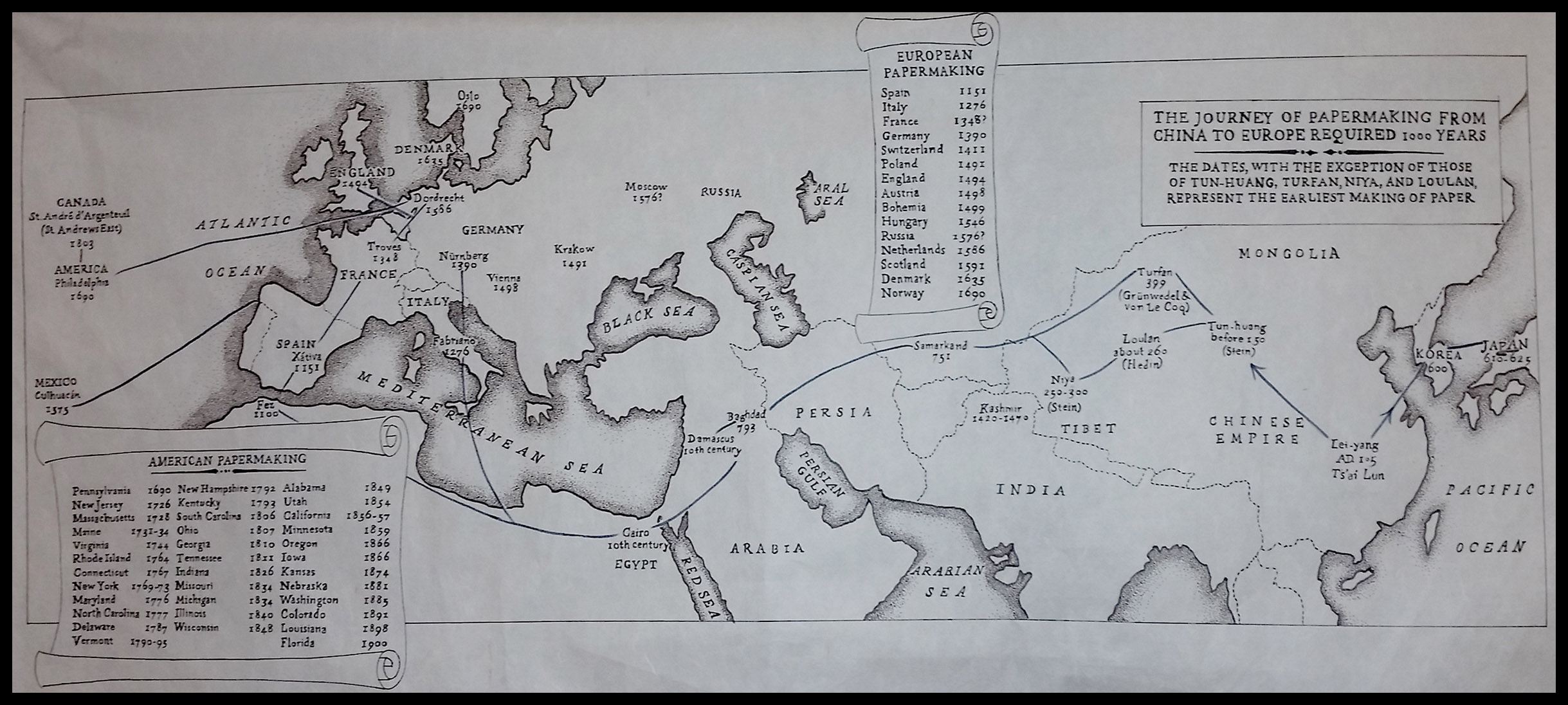J.M. Iacchei

Image hand-drawn directly from: Hunter, Dard. Papermaking: The History and Technique of an Ancient Craft. New York: Dover Publications, Inc., 1943.
The map above shows the spread of papermaking from China west to Korea and Japan, its spread East across the Chinese empire to Samarkand, then to Europe, and finally to the Americas. What is fascinating about this map is the amount of time papermaking took to spread from East to West – over 600 years to reach Samarkand in the 8th century and over 1000 to reach Moorish Spain in the 12th century.
The basic principles of papermaking are shared among Eastern and Western methods – fiber source, fiber preparation, beating, sheet formation, drying – but the raw materials selected for fiber, the local conditions, and the methods used to carry out each of these steps varied by region resulting in finished papers of distinct characteristics and qualities.
Some of the finest and most beautiful papers were said to come from the Islamic lands. These papers, made from flax or hemp rag fibers, were highly burnished with a stone giving a very smooth surface. The calligraphy and illuminations that were composed upon these papers were as remarkably beautiful as the surface on which they were inscribed.
Shown here is a manuscript brought to the lab to be removed from its mat, treated for digitization, and then rehoused. The new housing – a double-sided window mat with hinged cover allows both sides to be viewed.
Additional information about Islamic Papers can be found:
Bloom, Jonathan M. Paper Before Print: The History and Impact of Paper in the Islamic World. New Haven: Yale University Press, 2001.
Soteriou, Alexandra, Gift of Conquerors: Hand Papermaking in India. Ahmedabad, India: Mapin Publishing, 1999.


